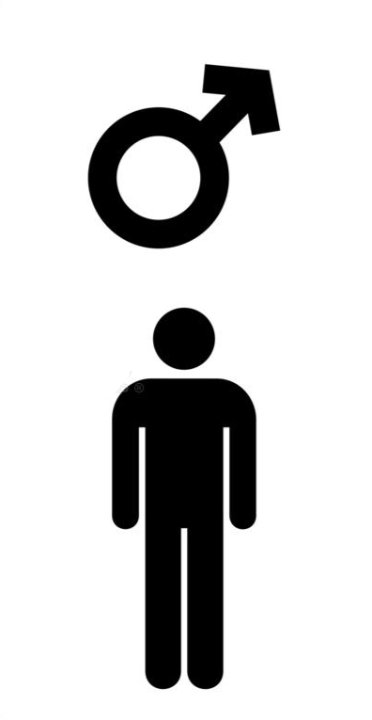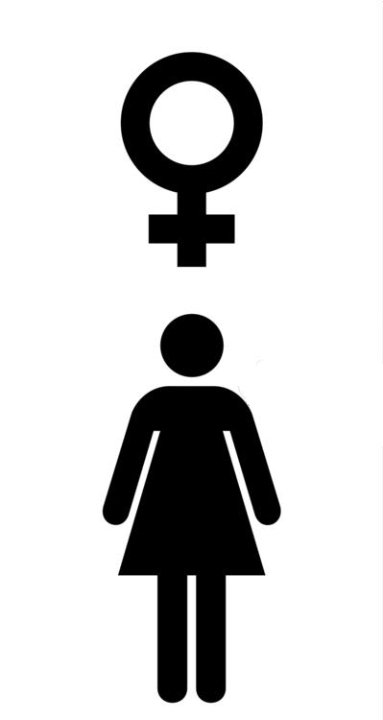The technique of moola bandha is simplicity itself and The e you will find this practical section is also very concise, straightforward and easy to follow. Although moola bandha may be incorporated with many other yogic techniques, we have excluded all extraneous practices in order to emphasize those directly related to the mastery of this bandha as a separate and a powerful practice in its own right. The complexities of moola bandha lie only in the location of mooladhara chakra itself, and for that reason we have included a number of preliminary practices to help you focus your awareness on the primary chakra. Certain advanced techniques for the awakening of mooladhara also serve to enhance awareness and control in moola bandha, adding an extra dimension of potency to the basic practice. These too have been included to enable the student to pursue this sadhana to the utmost.
Expert guidance Moola bandha should ideally be learned under the expert supervision of an experienced yoga teacher. Where this is not possible you must certainly endeavour to contact a competent guide should you experience any confusion or difficulty during your solo practice.Correct guidance will prevent many of the difficulties the student could possible encounter without supervision.
If you are suffering from a heart ailment, high blood pressure, vertigo, high intracranial pressure or amenorrhoea, then you should adopt this technique, like any other, only after clearance from your doctor and a qualified yoga therapist. Generally speaking, any person with one of these problems is advised not to practise moola bandha until he has recovered good health. Your yoga teacher will suggest suitable substitute practices.
Physical or psychic practice

Much discussion surrounds the question of whether moola bandha is a physical or mental practice. In fact it is both, though its ultimate effect, the arousal of kundalini, can only occur on a psychic pranic level. The simple physical con traction of mooladhara’s physical trigger point will not have so profound an effect as activating an infinite source of prana (kundalini). This will only manifest at far more subtle levels of consciousness beyond the range of physical aware ness. However, one should not feel that physical contraction of the perineal body/cervix does not play an indispensable role in learning to master the practice of moola bandha.
The perfection of moola bandha requires the develop ment of an acute refinement of mental and psychic awareness that allows for the localization, isolation and contraction of mooladhara chakra. This is developed in the beginning through the physical contraction of the perineal body or cervix as the case may be. We begin at the most accessible level, the tangible physical body. By combining physical contraction with mental awareness and visualization, we can then heighten our sensitivity on the psychic plane. Through the physical isolation and contraction of perineal body/ cervix the mind becomes one-pointed in that area, and this allows for the finer processes of pranic stimulation. The contraction further draws the mind towards concentrating on the psychic centre in the pranic body, mooladhara chakra itself. So until the practice is mastered completely, we must take assistance of actual physical contraction.
Nevertheless, there does come a stage for the advanced yogi in which moola bandha is only the psychic contraction of the mooladhara chakra. The physical contraction, having achieved its purpose, is no longer necessary. When the physical and the mental aspects of the practice have been fully integrated to spark sufficient psychic sensitivity, then you will find yourself spontaneously able to contract mooladhara without any physical contraction at all. You simply direct your awareness to mooladhara, and contract the chakra by thought alone. Thus moola bandha is perfected in three stages:
- Physical contraction only – preliminary, 2. Physical and mental contraction intermediate,
- Psychic contraction only advanced. To develop the capacity for psychic contraction of moola bandha usually takes years of regular practise but once it has been achieved, you will very quickly become established in this practice. Just the same, it is subject to fluctuation. If the mind is relaxed and one-pointed, then psychic contraction is easily effected, but if your thoughts are turbulent then you will find it more difficult. In this case use moola bandha with physical contraction to quieten the mind, then move on to the psychic bandha.
Integration with other practices

In order to master moola bandha, it must be practised as a separate sadhana in its own right, preferably by following the sequence of practices given here. Its ideal place in your yogic routine is after asanas and pranayama, but before meditation. Once perfected, moola bandha can then be performed in conjunction with many other yogic techniques. For your convenience, we have listed most of them below.
Nevertheless, it is neither necessary nor advisable to practise moola bandha on every possible occasion. This bandha is integrated with asanas and advanced pranayama only to achieve certain specific effects, and its indiscriminate use with any and every practice is a waste of time. For the correct application of moola bandha in this respect, we suggest you follow the advice of your teacher or consult Asana Pranayama Mudra Bandha, published by Yoga Publications Trust.
Duration

The student should not fall prey to the temptation of overpractise. As in every other aspect of yogic life, the key is moderation and appropriate application. The duration of each practice is specified at the end of its description. These are the recommended number of rounds for the average working student. They are not fixed, but in general fifteen to thirty minutes daily practice is ample. You may do fewer rounds if you wish. Indeed, it is preferable to practise a few rounds every day rather than many rounds every few days. If you wish to increase the length of your practice, once again you should discuss the matter with your teacher.
Spontaneous moola bandha Mooladhara chakra stimulation may lead to spontaneous moola bandha anywhere, anytime. When this occurs you will feel increased energy, mental clarity, and so on. This is a natural outcome of regular yogic practice culminating in expanded awareness. When it does occur it is accompanied by a blissful sensation within the whole organism, so you will know when it happens. There are certain practices which predispose to this experience, the foremost of these being meditation performed in siddhasana, siddha yoni asana, and padmasana. Of course, it can occur in any asana, pranayama, mudra or bandha. After regular practise perhaps you will be lucky enough to enjoy this experience.
Sitting position

There is no one single asana traditionally prescribed for the practice of moola bandha. Although many people associate this bandha with moolabandhasana, most people cannot even perform this advanced asana, let alone remain in it comfortably. Moolabandhasana is not a necessary pre requisite for moola bandha and is beyond consideration for 67 most of us. What is required is a steady position that may be comfortably held for some time. The back must be straight and it is desirable that a certain external pressure be applied to the perineum to enhance awareness of the mooladhara trigger point. The asanas that best fulfil these conditions are bhadrasana and siddhasana (siddha yoni asana for women). When moola bandha is practised as part of kundalini yoga kriyas, utthanpadasana is also commonly used. The details for all these asanas are given under the practices in ‘Locating Mooladhara Chakra’. If these asanas cannot be used you may sit in any other comfortable posture where the knees rest firmly on the ground: padmasana, swastikasana, ardha padmasana, sukhasana, vajrasana. Sukhasana especially may be modified so that one heel presses the perineum and thus it becomes a more suitable posture for moola bandha, and one which most people can use.
Each of these asanas has specific effects, but siddha yoni asana and siddhasana are the most highly recommended positions. They provide a steady base that keeps the spine straight and relaxed while ‘locking’ the legs so that if one swoons or falls asleep during the practice, there is no danger of falling over. As the trunk begins to lean forward, it comes to a point where the practitioner jerks awake. Not only this, but siddhasana/siddha yoni asana check the nervous and pranic flow in the lower body, enhancing the performance of moola bandha by assisting the upward flow of these energies. These advantages, in combination with the pres sure applied to the perineum, make siddhasana and siddha yoni asana ideal for the performance of moola bandha.
Nevertheless, you may find it difficult to adopt either of these postures in the beginning. Practise the pre-meditative postures in Asana Pranayama Mudra Bandha and gradually you will be successful. In the meantime, begin your moola bandha sadhana using bhadrasana, utthanpadasana, or any other asana where the awareness of mooladhara is enhanced.
How to know?

Perhaps the two most common questions asked by yoga students attempting to master moola bandha are: How can I know when I have contracted the perineal body/cervix?
How can I know when I have perfected moola bandha? At the start it is often difficult for the beginner to know when the perineal body/cervix is contracted. As the perineal body and cervix are both obscured from view, it is not even possible to be certain through visual inspection. However, one reliable method by which one may be sure is through the sense of touch. Obviously the method varies for male and female, therefore precise details are outlined below.
Male

In the sitting or lying position place the finger against the point approximately midway between the anus and the scrotum. Inhale and with the awareness concentrated slowly attempt to contract the perineal body. If you can feel that the point at which your finger rests has lifted upwards into the body then you have succeeded in contracting the perineal body. If this takes place without movement of the anus or penis, then be assured that you have also successfully isolated the perineal body.
Female

In the sitting or lying position, insert the finger into the vagina as far as you can. Inhale and with the awareness concentrated slowly attempt to contract the muscles around your finger. If you can distinctly feel the muscles of the upper vagina contract, then you have succeeded in contrac ting the area around the cervix. If you achieve this contraction without movement of the anus or the urinary opening, then you have also successfully isolated the mooladhara trigger point.
It should be understood quite clearly at this point that there is a fundamental difference between the correct performance of moola bandha and its complete mastery. Even though the cervix and perineal body can be both isolated and constricted on a physical level, this is not an indication that moola bandha has been mastered, for moola bandha is also psychic contraction; ability to mentally contract the psychic centre known as mooladhara chakra will take considerably more time to mature. The experience of complete mastery of moola bandha is distinct and definite and common to both sexes – an overwhelming sensation of ‘mental orgasm’ in the eyebrow centre or directly behind it in ajna chakra. This experience is one of indescribable bliss and may last for anything up to fifteen minutes.
A sadhana

Moola bandha is not just another yogic technique. It has such significance in arousal of kundalini that, in every sense, it constitutes an important tantric sadhana.
Any sadhana is like a delicate plant that, when watered regularly and patiently protected, bursts forth in brilliant fragrant flowers. So too, regular and patient practice will open the flower of the mooladhara lotus to the eternal sunshine of spiritual awakening. May every grace be showered upon you.

Your blog post on pranic effects is a breath of fresh air! I resonate with the holistic approach you take. Looking forward to incorporating these insights into my mindfulness practice.